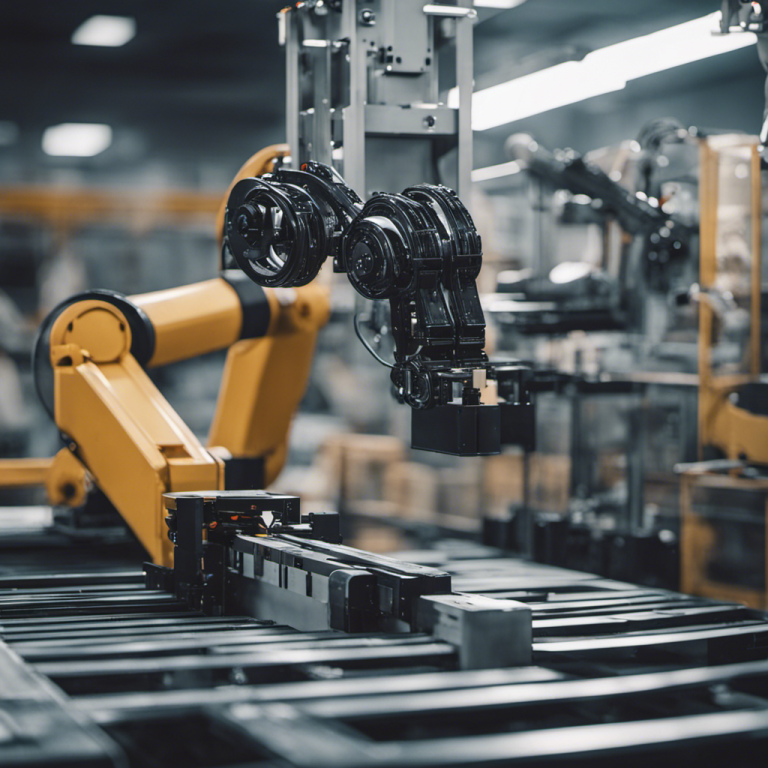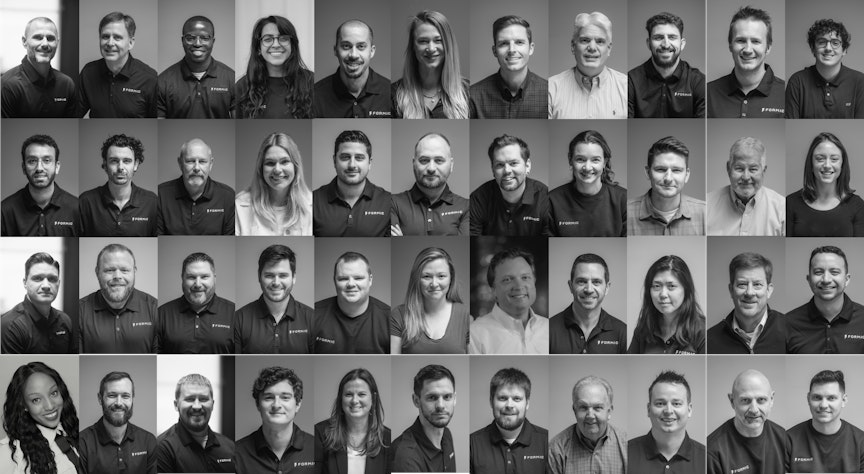What is Robots-as-a-Service (RaaS)?
Robots-as-a-Service (RaaS) is a business model in which companies offer industrial robotic automation via a subscription-based contract. This allows businesses to adopt industrial robotic solutions without the significant upfront costs of purchasing and maintaining the equipment. ABI Research published a report that predicts that by 2026, RaaS installations will generate $34 billion in revenue.
How Does RaaS Work?
In a typical RaaS agreement, a company licenses the use of an industrial robot or collaborative robot (cobot), similar to software-as-a-service (SaaS) models. This eliminates the need for companies to purchase outright or pay interest on the financing of the robotic equipment, the need for hardware and software maintenance teams and programs, and the need for hiring external consulting on deployment of the industrial robots. RaaS is typically delivered on a per-hour or monthly usage rate - the company only pays for the use of the robot.
Popular Industrial RaaS Applications
Fast-Moving Consumer Goods (FMCG) Automation:
- Case erecting robots that form cases before products are placed inside
- Case packing machines and automated bag packing machines that prepare products for end-of-line stacking
- Case sealing systems that tape cases closed, readying them for pallets
- Material handling robots perform automated palletizing services that stack boxes or bags onto pallets, readying them for shipment.
Custom Metal Fabrication Automation:
- CNC Machine Tending Robotics: Machine Operating Robots load and unload parts into CNC machines, which carry out processes like milling and grinding.
- Welding Robotics: Welding Robots perform precision welding tasks at a faster rate with greater repeatability than human counterparts, ensuring final products meet quality standards.
Get Your Free Getting Started Guide Here
What Advantages Does RaaS Automation Provide?
The RaaS automation model provides many advantages for SMB and Mid-Market industrial businesses looking to improve the scale of their production processes and growth in their bottom line. RaaS removes both financial and operational barriers to adopting automation, while unlocking the traditional advantages of industrial automation.
Overcoming Labor Shortages:
RaaS makes industrial automation accessible for companies, even those facing extreme labor shortages. In some facilities, there are anywhere from 20% to 50% unfilled roles with 39% annual turnover, leading to a large capacity gap where machine idle time and downtime costs companies over $100 billion per year, according to a Harvard Study. RaaS can fill this gap by providing robotic labor to keep production running more consistently, and shifts can be scaled up and down with the push of a button..
No Capital Expense:
The RaaS model significantly reduces the typically high operational costs and technology barriers associated with conventional industrial automation solutions. It shifts capital expenses for automation to operational or labor expenses, thereby eliminating the need for a large upfront investment which is particularly beneficial for small and medium-sized businesses.
24/7 Maintenance:
RaaS often comes with 24/7 remote monitoring services ensuring that the robots are always performing as they should be. This continuous monitoring helps in reducing downtimes and ensuring that the robots are maintained properly, thus ensuring smooth operations.
Ongoing Automation Expertise:
RaaS providers supply all the equipment, engineering, and maintenance, enabling companies to deploy industrial automation even without in-house expertise. This is crucial for smaller companies or those just starting with automation.
Improved Safety:
By adopting automation through RaaS, facilities can protect employees from repetitive and potentially hazardous tasks. Robotic systems can handle the bending, twisting, and lifting for all three shifts,no matter the weight, size, shape, speed or temperature of the products being produced.
Repeatable Quality:
Automation through RaaS ensures repeatable quality by minimizing human errors and maintaining consistent production standards. Robotics perform the programmed task in the same way every time without distraction, fatigue, or a lapse in attention to detail. The reduced payment rate coupled with a reduction in production errors further increases the ROI of adopting a RaaS system.
Increased Throughput:
RaaS enables companies to increase throughput by automating routine tasks, thus speeding up the production process and making it more efficient. For example, companies like Formic offer robotic systems that can sort items at speeds of 400+ units per hour, improving the overall throughput - and they can perform continuously shift after shift after shift.
Redeployment of Labor:
By automating repetitive tasks, RaaS allows companies to redeploy their labor to more value-added activities. With labor shortages at an all time high, and more than 1,000,000 manufacturing jobs going unfilled this year, retaining employees and providing them with more engaging work isn’t just good for the bottom line, it supports the sustainability and institutional knowledge of the team in place at the business.
RaaS is proving to be a game-changing model for many industries, by making industrial automation accessible and affordable, and addressing challenges like labor shortages, high capital expenses, and the need for ongoing automation expertise. By design, RaaS makes it easy for SMB and Mid-Market businesses that have not previously adopted automation and robotics to bring these systems into their facilities, level up their production processes, and experience the positive outcomes only available to larger businesses historically. IT is a game changer for every family owned and operated manufacturing business in the United States.
Get Your Free Getting Started Guide Here

Challenges and Solutions in RaaS Implementation
It is imperative that companies choose the right partner in launching their Robotics-as-a-Service solution. Companies like Formic, who guarantee their systems’ performance, are the ideal choice for manufacturers considering Robots-as-a-Service because the RaaS model requires providers to have deep robotic system knowledge, significant training on different use cases, and expertise to meet a company's needs. Physical implementation of robots in facilities and the integration of software for human operators can be complex.
Benefits of RaaS Model over Traditional Robotics Programs
- Flexibility: RaaS provides companies with the ability to easily adapt to changing market conditions and business needs as their company grows over time.
- Scalability: Businesses can scale up or down their robotic operations as required.
- Lower Cost of Entry: The subscription-based model eliminates the need for large upfront investments.
- Support: RaaS includes monitoring and maintenance of the solution, so the manufacturer doesn’t need to have that expertise on staff
- Simplicity: The multi year support and partnership makes it easy for new adopters to get started without any knowledge or risk
Comparison with Traditional Robotics Programs
Companies assessing traditional robotics purchasing often overlook the cost of upkeep and programing. Not only do industrial automation solutions require substantial upfront investments in robotic systems and technology, the ongoing cost of maintenance and updates usually offsets depreciation write-offs, which are the main incentive for owning the equipment. This can be a significant barrier to entry for many businesses, particularly small to medium-sized enterprises. In contrast, the RaaS model operates on a subscription-based contract, where companies pay a recurring fee that covers the use of the robotic units, maintenance, and updates - while allowing equipment to be upgraded or swapped out with solutions that best fit the need of the business. With RaaS, the investment is constantly working for you 24/7, so you will never need to put a tarp over an old system and push it under the stairs to collect dust. This makes RaaS a more financially viable option for many businesses, offering greater flexibility and scalability to meet their specific needs.
How is RaaS different from a lease?
Robotics as a Service (RaaS) differs from traditional leasing models in that it typically includes not just the physical robot, but also software, maintenance, and support services, providing a comprehensive solution for businesses. This makes RaaS a more advantageous option than leasing, as it offers a holistic approach to incorporating robotics into operations, ensuring that the systems are always up-to-date and functioning optimally. With RaaS, businesses can easily scale their operations up or down based on current needs, without worrying about the costs and logistics associated with maintaining and updating the equipment. This flexibility, combined with the added support and maintenance services included in the RaaS model, makes it a superior choice for companies looking to leverage the benefits of robotics in their operations.
Short Video: How is RaaS different from a lease?
Video Summary
- Equipment lease requires the lessee to be responsible for maintenance and repairs at the end.
- RaaS (Robot as a Service) allows for the option to upgrade or remove equipment.
- RaaS offers flexibility in contracts without locking the lessee into anything.
- Formic was chosen due to the flexibility and symbiotic relationship it offered.
Questions Covered in the video
How is RaaS different from a lease? How does an equipment lease work?
With an equipment lease, you are responsible for maintenance and repairs, and at the end, you have to decide whether to buy out the equipment or not.
What is the advantage of RaaS?
RaaS automation offers flexibility and the ability to upgrade or remove equipment when needed.
Why did the company choose RaaS over other options?
The company chose Formic’s RaaS automation because it offered flexibility and a symbiotic relationship without locking them into anything.
What role does the speaker have in the company?
The speaker is involved in contract review and chose RaaS automation based on the flexibility and advantageous contract offered by Formic.
The Speak Saw Value in RaaS vs. the Lease Option
RaaS (Robot-as-a-Service) is different from a lease because with RaaS, the provider is responsible for maintenance and upgrades of the robot. Wth a lease, the lessee is responsible for maintenance and repairs and, at the end, the lessee has to decide whether to buy out the equipment or not. RaaS offers more flexibility and a symbiotic relationship between the provider and the user.
The Rise of Robots-as-a-Service (RaaS)
The development of robotic devices is costly and time-consuming, with significant investments required for operation and maintenance. The RaaS model addresses these challenges by offering scalable and flexible solutions, making packing and stacking robotics more accessible to small and medium-sized businesses. This democratization of robotic technological capabilities will continue to drive the US manufacturing industry forward, strengthening the backbone of our economy.
Conclusion
The RaaS model represents a significant shift in the way companies approach robotics. By providing flexible, scalable, and cost-effective solutions, RaaS opens up the world of robotics to a wider range of businesses, allowing them to stay competitive in an ever-evolving market.
Download the Free Guide: How to Get Started with Robotic Automation
Automating with Formic, the only question manufacturers need to ask themselves is: what repetitive manual tasks can be automated in my facility right now?


